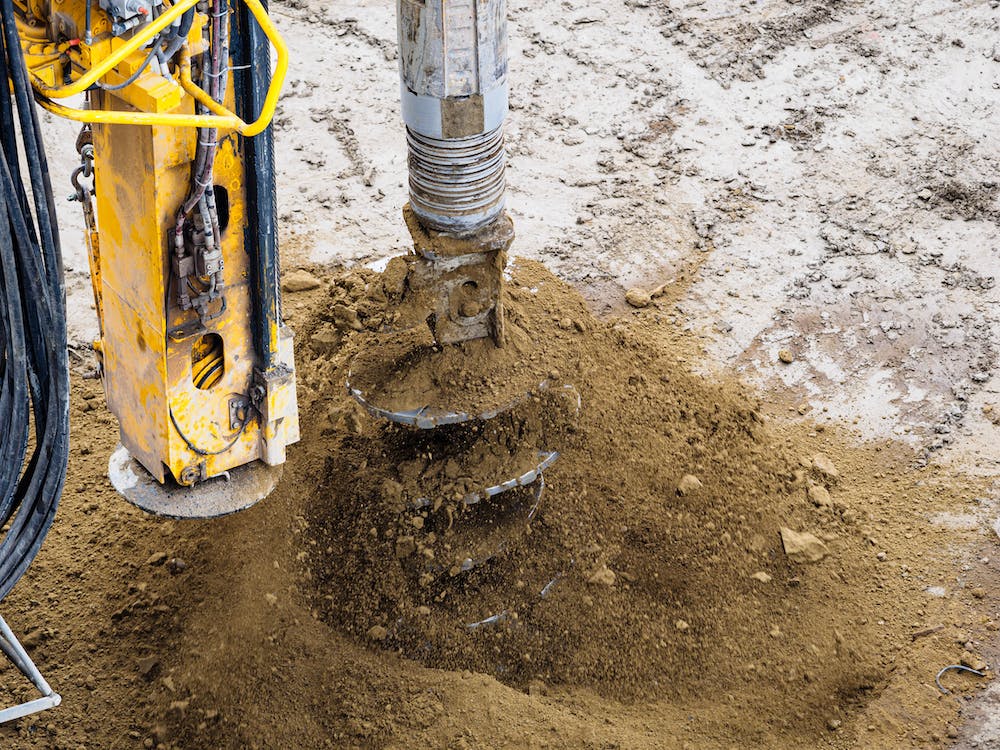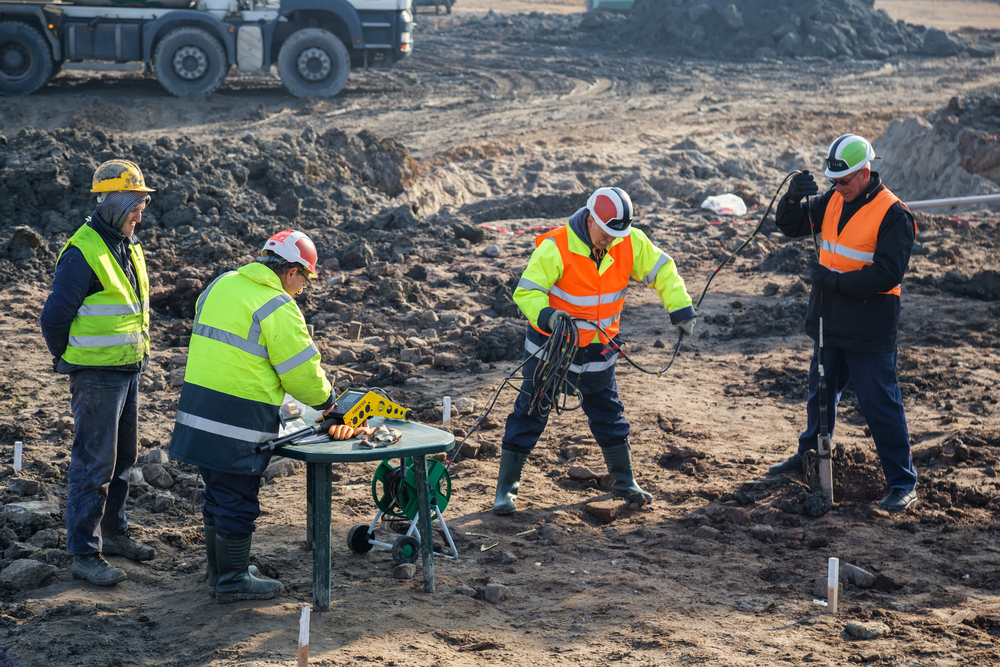A Comprehensive Review of Geotechnical Design Techniques and Their Effect On Modern Civil Engineering Projects
Geotechnical engineering serves as the foundation of modern-day civil engineering, supplying vital techniques that deal with the intricacies of subsurface problems. The interplay of soil evaluation, structure style, and innovative modern technologies shapes the integrity and sustainability of facilities tasks.
Significance of Geotechnical Design
Geotechnical engineering works as a critical foundation for civil engineering tasks, affecting the security and security of frameworks. This discipline concentrates on the behavior of dirt and rock products, offering necessary understandings that guide the design and building and construction procedures. By comprehending the communication between the earth and crafted structures, geotechnical designers can assess dangers related to ground problems, such as settlement, slope security, and liquefaction.
The importance of geotechnical engineering extends past mere structural stability; it plays an essential function in ecological security and sustainability. Appropriately implemented geotechnical evaluations make sure that tasks lessen their ecological footprint and adhere to governing needs (geotechnical companies in south africa). Moreover, geotechnical engineering contributes in site option, making it possible for designers to identify appropriate places for construction that minimize prospective dangers.
In enhancement, geotechnical design promotes innovation in civil design by progressing techniques for ground renovation, structure style, and excavation. The discipline's payments are crucial in attending to challenges posed by varying dirt conditions, hence promoting risk-free and reliable facilities growth. Generally, the value of geotechnical design is vital in guaranteeing that civil design tasks are not just possible however additionally resistant versus natural and manufactured adversities.
Secret Techniques in Geotechnical Design

An additional crucial strategy is dirt stablizing, which involves modifying soil residential properties to improve load-bearing capacity or decrease negotiation. Techniques such as adding cement, lime, or making use of geosynthetics are frequently made use of to achieve dirt enhancement.
Ground enhancement methods, including vibrant compaction and vibro-replacement, are additionally vital. These approaches aim to densify loosened or soft dirts, boosting their stamina and reducing liquefaction possibility in seismic areas.
Preserving frameworks, such as sheet stacks and dirt nailing, are employed to sustain excavations and avoid soil activity. Furthermore, slope stabilization methods, including drain systems and retaining walls, are important for mitigating landslide threats.

Dirt Evaluation and Evaluating Techniques
Efficient dirt analysis and screening methods are crucial for comprehending the physical and chemical residential or commercial properties of soil, which directly influence design choices. A thorough analysis of dirt qualities is vital for predicting actions under various loading problems and environmental impacts.
Common soil screening methods include both area and research laboratory techniques. Field examinations, such as the Requirement Infiltration Test (SPT) and Cone Penetration Examination (CPT), supply immediate understandings into dirt strength, thickness, and stratification. These examinations assist designers analyze website problems effectively prior to even more extensive lab evaluations.
Laboratory screening methods, such as Atterberg limitations, grain dimension circulation, and compaction tests, are vital for figuring out dirt plasticity, dampness material, and ideal compaction degrees. Advanced methods like triaxial tests and combined undrained (CU) tests provide beneficial data read more on shear strength and efficient tension criteria.
Chemical screening, including pH, electrical conductivity, and natural web content evaluation, is likewise important for recognizing prospective dirt contamination and its effect on construction products. Collectively, these dirt evaluation and testing techniques form the foundation of informed decision-making in geotechnical engineering, guaranteeing the safety and security of contemporary civil design tasks.
Foundation Layout Approaches
Foundation design techniques are important in ensuring the stability and long life of structures. These techniques can be classified into deep and shallow structures, each fit to details dirt problems and filling situations. Superficial foundations, such as spread grounds and mat foundations, are typically utilized when surface dirts have appropriate bearing capability. They distribute the lots over a bigger important source location, reducing settlement risks.
In contrast, deep structures, including heaps and pierced shafts, are utilized when surface area dirts are inadequate or weak for sustaining the framework. These foundations transfer lots to much deeper, extra secure soil or rock layers, making them crucial for high-rise buildings and bridges in challenging geotechnical problems.
Picking the suitable foundation design entails extensive geotechnical investigations, consisting of dirt make-up, birthing capacity, and groundwater conditions. Moreover, engineers need to consider elements such as settlement, side tons, and prospective seismic task to guarantee the structure's performance over time.
Inevitably, a well-executed foundation design is a pivotal facet of civil engineering, straight affecting the safety, durability, and capability of frameworks. geotechnical specialist. By aligning foundation kinds with site-specific problems, engineers can successfully alleviate risks connected with foundation failing
Advancements Forming Civil Engineering

Sustainable products, such as high-performance concrete and recycled accumulations, are also getting grip, promoting environmentally friendly techniques while preserving structural honesty. In addition, progressed geotechnical methods, such as ground enhancement and deep mixing approaches, are boosting the stability of structures in difficult soil problems.
Additionally, the use of drones and remote noticing innovation is boosting site evaluating and keeping track of, offering real-time data that help in handling building and construction progress and security. The execution of cutting-edge building and construction methods, such as modular and premade building, further expedites job timelines and reduces waste. Jointly, these innovations are not just changing civil design techniques however additionally ensuring that modern-day framework go to this web-site meets the needs of an expanding worldwide populace while attending to environmental worries.
Final Thought
In final thought, geotechnical design techniques are indispensable to the success of contemporary civil design projects. The application of website investigation, soil stablizing, and ground enhancement methods guarantees the safety and security and security of infrastructure. Innovations such as Building Details Modeling (BIM) and progressed surveillance innovations even more improve job efficiency and accuracy. By employing these strategies, designers can reduce dangers and add to the development of durable urban environments, inevitably fostering lasting growth and safety and security in civil design practices.
Geotechnical engineering serves as the backbone of contemporary civil design, supplying essential methods that address the complexities of subsurface conditions.Geotechnical engineering offers as a critical foundation for civil design projects, influencing the safety and stability of frameworks.In addition, geotechnical design fosters development in civil engineering by advancing strategies for ground improvement, foundation style, and excavation. On the whole, the relevance of geotechnical design is critical in guaranteeing that civil engineering tasks are not just possible but likewise resilient versus manufactured and all-natural misfortunes.
In final thought, geotechnical design methods are important to the success of contemporary civil design tasks.